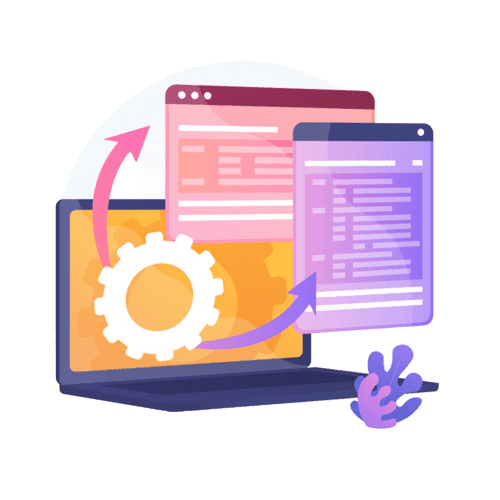Preparing for a process audit involves structured planning, clear communication, and employee engagement. Key practices include maintaining audit readiness, conducting pre-audit assessments, using process mapping tools, and ensuring proper documentation control. Engaging process owners and fostering continuous improvement enhances audit success while addressing common challenges like resource constraints and stress.
Enhancing Business Success Through Effective Traceability: Lessons from Industry
In today’s fast-paced and highly regulated industries, traceability is crucial for maintaining quality and ensuring compliance with safety standards. By effectively implementing traceability practices, companies can track and link project artifacts throughout the product lifecycle, ensuring that customer requirements are met and regulatory obligations are fulfilled. This not only enhances the reliability of products and services but also strengthens the organization’s reputation and competitive edge in the market.

In today’s competitive market, businesses offering services related to ISO standards, IATF standards, VDA standards, and other critical compliance frameworks must prioritize the implementation of traceability in their operational processes. Traceability is the practice of tracking and linking various artifacts, such as requirements, designs, and test cases, throughout the lifecycle of a project. This approach ensures quality, compliance, and accountability, especially in safety-critical domains like medical devices, automotive, and aerospace. Drawing from practical experiences and insights, this blog post discusses the critical importance of traceability and offers valuable lessons for companies providing training, mentoring, consulting, and other services related to these standards.
The Importance of Traceability in Safety-Critical Industries
Traceability has emerged as a cornerstone in industries where safety and quality are paramount. As outlined in the paper Assessing Traceability—Practical Experiences and Lessons Learned, traceability is essential for meeting regulatory requirements and ensuring that software development processes are both effective and efficient. For example, the Food and Drug Administration (FDA) mandates that software requirements are traceable to system requirements and risk analysis results, ensuring that all software codes are linked to established specifications and test procedures. Similarly, traceability is crucial in automotive standards like IATF 16949 and VDA, where it ensures compliance with safety and quality management protocols.
%
defects remaining undetected
According to a study published by the National Institute of Standards and Technology (NIST), poor traceability in software development can result in up to 80% of defects remaining undetected until the testing phase, significantly increasing the cost of fixing these issues by up to 100 times compared to addressing them during the requirements stage.
%
reduction in project overruns
The International Data Corporation (IDC) reports that organizations implementing comprehensive traceability practices see a 20% reduction in project overruns and a 30% decrease in compliance-related incidents, demonstrating the significant impact of traceability on both project efficiency and regulatory adherence.
Barriers to Implementing Traceability
Despite its importance, many organizations face significant barriers to implementing effective traceability. Common challenges include the complexity and cost associated with building and maintaining a requirements traceability matrix, which can be time-consuming and error-prone. Additionally, there is often a lack of awareness and guidance on how to implement traceability, leading to inconsistencies and gaps in the traceability process. These barriers are exacerbated by differing stakeholder perceptions, with some viewing traceability as a means of micromanaging their work rather than a tool for enhancing quality and compliance.
Without traceability, there can be no quality. You can’t manage what you don’t measure, and traceability is the key to understanding and improving every step in the process.
Practical Approaches to Improving Traceability
To address these challenges, companies should consider adopting a structured traceability process assessment model (PAM). The development and validation of such a model, as demonstrated in the case study of two medical device organizations, can identify strengths and weaknesses in an organization’s traceability practices. This assessment framework typically includes evaluating traceability across change management, risk management, and software development lifecycle (SDLC) processes.
Key Strategies for Implementing Effective Traceability
Automate Traceability Processes
Automation can significantly reduce the time and effort required to maintain traceability. Using tools that support the Open Services for Lifecycle Collaboration (OSLC) initiative can streamline the integration of various lifecycle tools and provide dynamic traceability that evolves with ongoing changes.
Adopt Best Practices
Implementing best practices, such as establishing a clear company policy on traceability and developing standard operating procedures, can help institutionalize traceability across projects. Regular training and availability of resources are essential to ensure that staff understand and adhere to these practices.
Leverage Industry-Specific Models
Tailoring the traceability framework to meet industry-specific standards, such as Automotive SPICE for the automotive and medical device sectors, can help align traceability practices with regulatory requirements and best practices.
Regular Assessments and Continuous Improvement
Conducting regular assessments using a traceability PAM allows organizations to identify areas of improvement and make necessary adjustments. This approach not only ensures compliance but also enhances the overall quality and safety of the product.
Conclusion
Effective traceability is not just about meeting regulatory requirements; it is a strategic asset that enhances quality, safety, and customer satisfaction. By overcoming barriers through automation, best practices, and regular assessments, companies can improve their traceability processes, thereby ensuring compliance with ISO, IATF, and VDA standards. This commitment to traceability will ultimately lead to better project outcomes, reduced risks, and enhanced market competitiveness. Whether in training, consulting, or implementation, embracing traceability is a step towards achieving excellence in service delivery and operational efficiency.
Wanna know more? Let's dive in!
Process Audits Explained: A Comprehensive Guide
Process audits are systematic evaluations of organizational processes to ensure compliance, efficiency, and effectiveness. They identify areas for improvement, mitigate risks, and ensure regulatory compliance. This guide explores types, methodologies, benefits, and challenges of process audits, providing a comprehensive understanding of their role in enhancing operational performance.
Step-by-Step Process for Passing Your First ISO Audit with Flying Colors
Preparing for your first ISO audit? This step-by-step guide breaks down everything from documentation and employee training to internal audits and corrective actions. Follow these essential steps to ensure you pass your ISO audit with flying colors and achieve certification success. Start your ISO journey today!
How Technology is Revolutionizing ISO Audits: Digital Tools for Compliance
Digital tools and audit management software are transforming ISO audits by improving accuracy, efficiency, and compliance. Automation, centralized data management, and AI-driven analytics streamline processes, reduce errors, and enhance risk management, making ISO audits more manageable and future-ready for organizations aiming to maintain certification.
What to Expect During an ISO Surveillance Audit: Staying Compliant Year-Round
ISO surveillance audits are essential for maintaining certification and ensuring compliance with international standards. This guide outlines what to expect during these audits, the importance of continuous improvement, and strategies for year-round ISO compliance, helping businesses pass audits effortlessly while enhancing operational efficiency and customer satisfaction.
Top 10 Benefits of Conducting Regular Internal Audits
Conducting regular internal audits before ISO certification offers numerous benefits, including early detection of nonconformities, streamlined audit processes, improved documentation, and cost savings. These audits foster continuous improvement, enhance risk management, boost organizational efficiency, and ensure long-term compliance, setting the foundation for successful ISO certification.
The Ultimate Guide to Preparing for an ISO Audit
Preparing for an ISO audit can be challenging, with common mistakes like poor documentation, insufficient internal audits, and lack of leadership involvement. This guide explores these pitfalls and offers expert tips, an audit readiness checklist, and strategies to ensure a smooth path to successful ISO certification.
Comprehensive Overview of Different Types of Audits
We explore various types of audits, including system, human error, clinical, cybersecurity, and business continuity audits. Each audit plays a unique role in ensuring compliance, improving efficiency, and reducing risks across different industries, helping organizations achieve their quality, safety, and operational goals.
Online Networking and Individual Development: A Deep Dive
Online networking enables global collaboration, transcending geographic limitations for personal and professional development. Through models like T-learning, I-learning, M-learning, and N-learning, individuals engage in knowledge sharing and growth. Effective e-moderation, scaffolded learning, and addressing challenges ensure productive and enriching online development experiences.
Networking and Innovation
Networking plays a crucial role in fostering innovation by enabling firms to share knowledge, access new markets, and pool resources. This article explores how diverse networks, including formal alliances and informal relationships, contribute to innovation while highlighting challenges such as network complexity and potential failures.
Developing a Comprehensive Networking Strategy
Developing a strategic networking plan is crucial for career advancement. By setting clear goals, identifying key contacts, and maintaining meaningful relationships, professionals can unlock hidden opportunities, enhance their brand, and foster valuable collaborations that support long-term growth. Networking is an ongoing process essential for sustained career success.
Networking at Events
Networking is essential for career growth. Success lies in preparation, active engagement, and thoughtful follow-up. By mastering these strategies, you can create meaningful connections at any event, opening doors to opportunities and collaborations that can significantly impact your professional trajectory.












